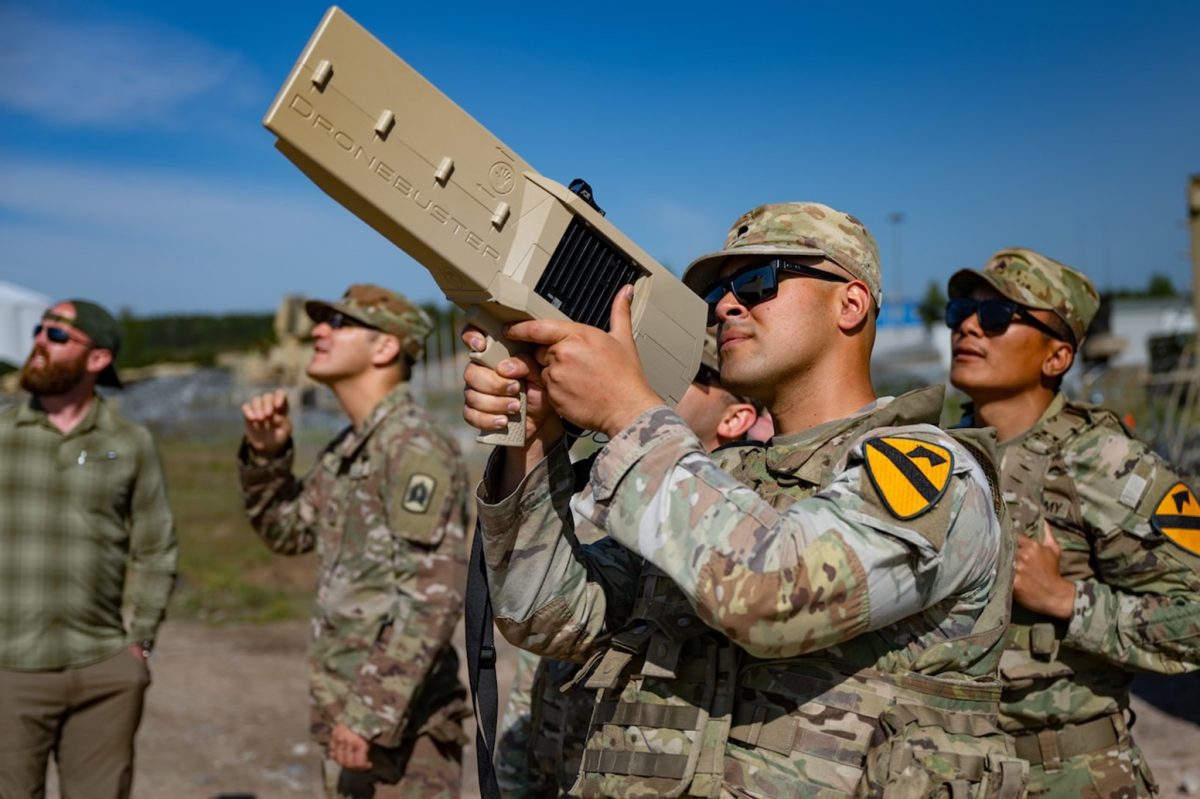The U.S. Defense Department has announced that it has adopted a new, classified strategy for countering the effects of unmanned systems, also called “drones.”
Unmanned systems are increasing in capability and are posing ever-increasing threats to the U.S. and its allies. The Pentagon notes that “Enabled by growing commercial innovation and the increasing sophistication of artificial intelligence, autonomy and networking technology, unmanned systems are fundamentally changing how militaries of all sizes, capacities, and capabilities — as well as non-state actors — achieve their objectives.”
Air Force Maj. Gen. Pat Ryder worries that drones “..have the potential to pose both an urgent and enduring threat to U.S. personnel, facilities and assets overseas and increasingly in the U.S. homeland,The threats presented by these systems are changing how wars are fought.”
Specific details of The new strategy are classified, but certain threat areas Have been openly discussed.
One effort involves gaining a better understanding of the threats posed by unmanned systems and improving the ability of American forces to detect, track and characterize those threats. Another aspect of the strategy is to build counter-unmanned system efforts and knowledge into existing U.S. military doctrine, organization, training, materiel, leadership, personnel, facilities and policy.
The military says it is committed to delivering adaptable counter-UAS solutions more quickly and at scale, including by working more closely with U.S. partners and allies.
Of note also is that the department, within the strategy, recognizes the vast difference between the low cost of developing and deploying unmanned systems and the high cost the U.S. currently spends to defeat those systems.
The intensive use of drones, highlighted by the fighting in the Russian invasion of Ukraine, illustrates that warfighting is changing more rapidly than it has in decades. U.S. military strategists are seeking to transform based on “lessons learned and a sober assessment of the modern battlefield.”
As a consequence, major changes in arms programs are taking place.
The Army will discontinue development of the Future Attack and Reconnaissance Aircraft at the conclusion of prototyping activities while continuing investment in the Future Long Range Assault Aircraft, and making new investments in UH-60 Blackhawk, and CH-47F Block II Chinook. The Army will phase out operations of systems that are not capable or survivable on today’s battlefield including the Shadow and Raven unmanned aircraft systems. The Army will increase investments in cutting-edge, effective, capable and survivable unmanned aerial reconnaissance capabilities and the procurement of commercial small unmanned systems.
“The Army is deeply committed to our aviation portfolio and to our partners in the aviation industrial base,” said Secretary of the Army Christine Wormuth. “These steps enable us to work with industry to deliver critical capabilities as part of the joint force, place the Army on a sustainable strategic path, and continue the Army’s broader modernization plan which is the service’s most significant modernization effort in more than four decades.”
“We are learning from the battlefield—especially in Ukraine—that aerial reconnaissance has fundamentally changed,” said the Chief of Staff of the Army, General Randy George. “Sensors and weapons mounted on a variety of unmanned systems and in space are more ubiquitous, further reaching, and more inexpensive than ever before…”
It’s not only the American armed forces that are taking note. The Australian Army Research Center explains that “Overall, drones have been shown to provide lethality at range, low cost, and with economy of effort that can be used in the air, land and sea. The ability to see farther accurately, coupled with cost savings, has made UAVs indispensable for both Ukrainian defensive and offensive operations. Apart from the overwhelming use of drones in the air, the war in Ukraine unveiled successful use of the naval drones, and the infancy of the land drones for various purposes.”
Photo: Army Spc. Kevin Jiminez operates the “Dronebuster” during counter-unmanned aerial systems training near Pabrade, Lithuania
